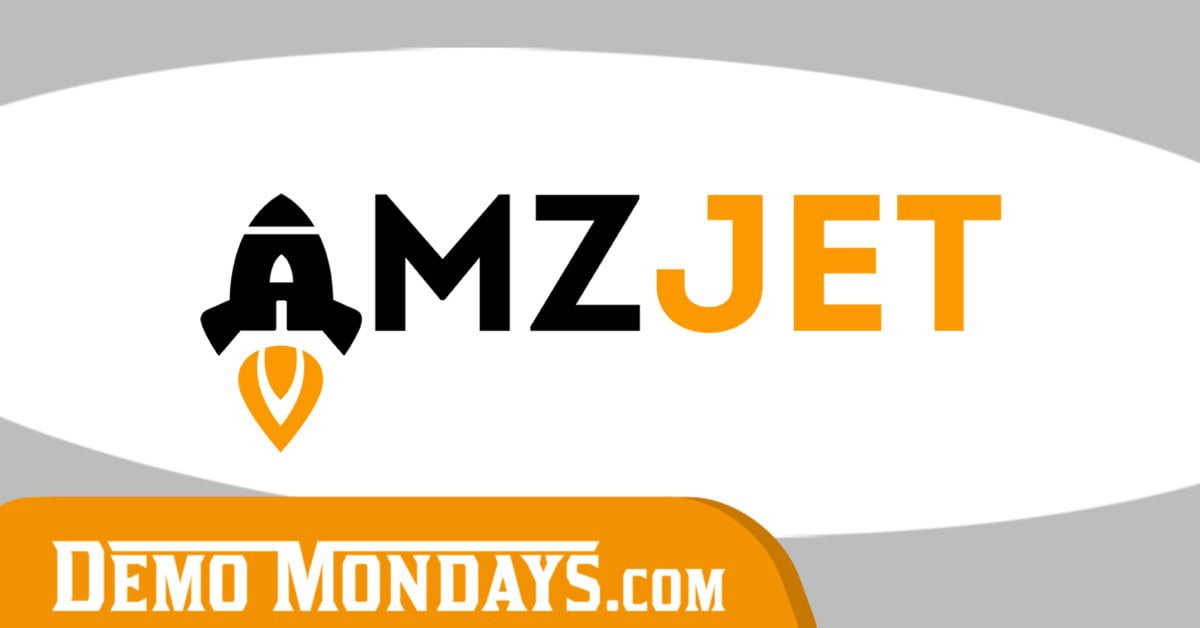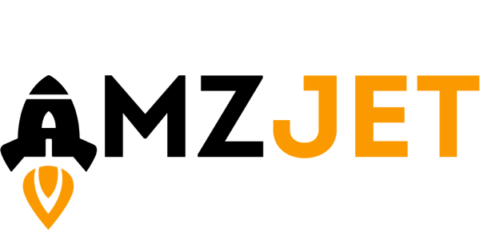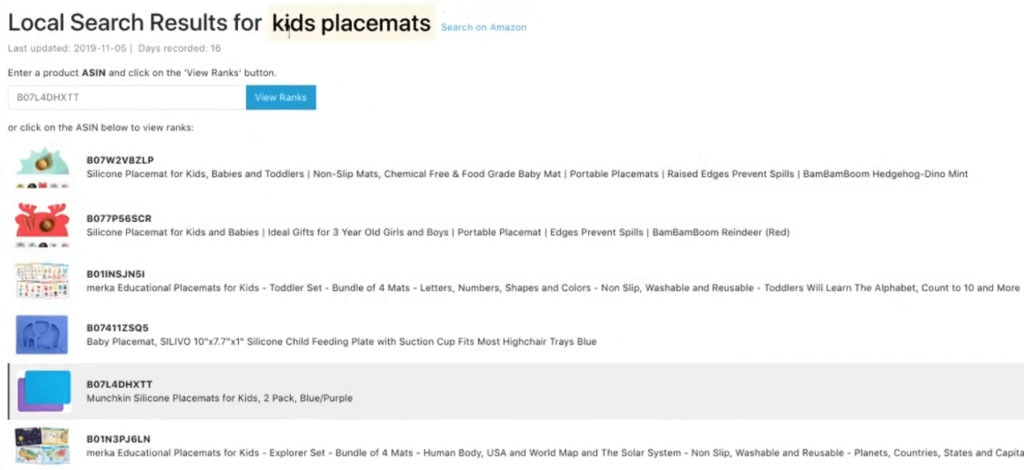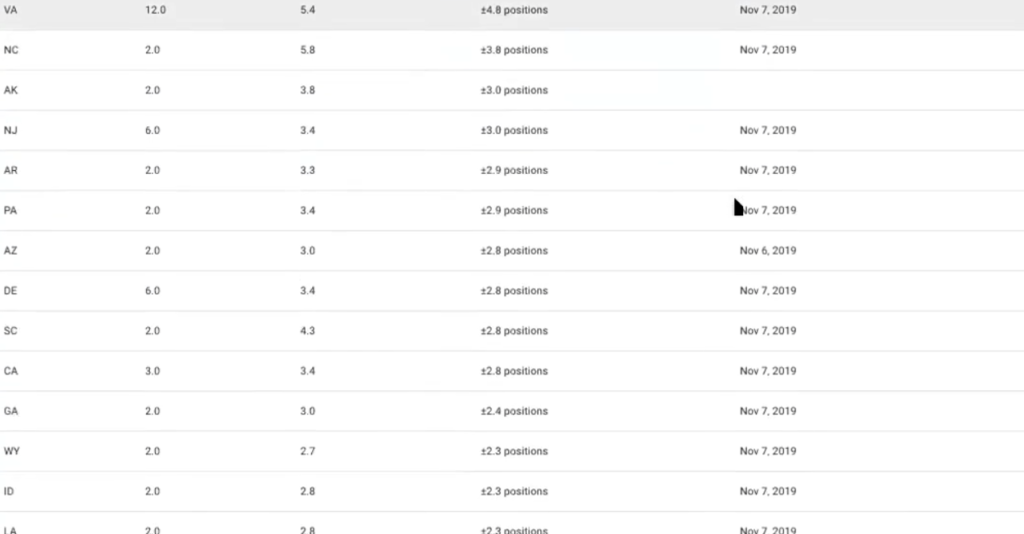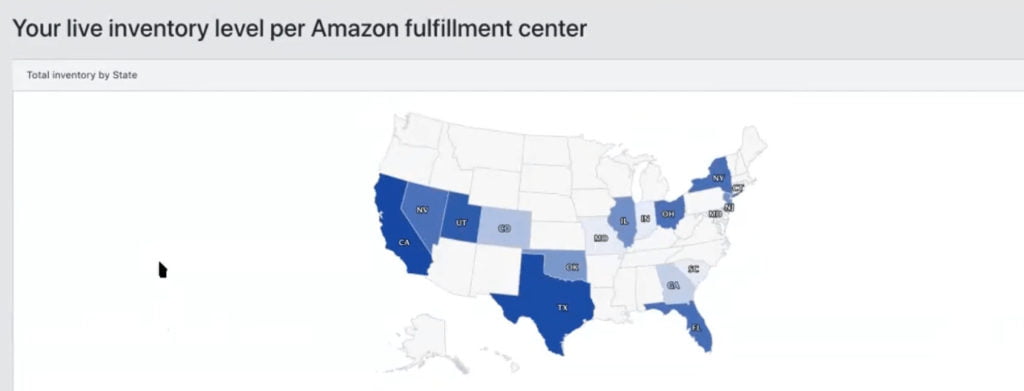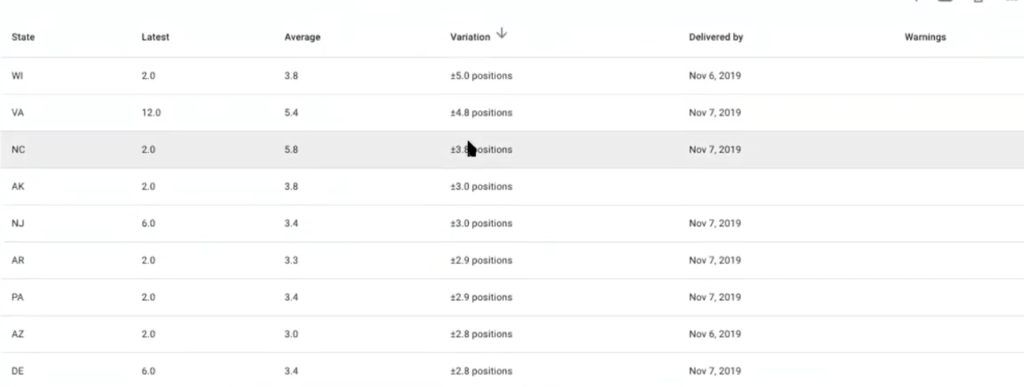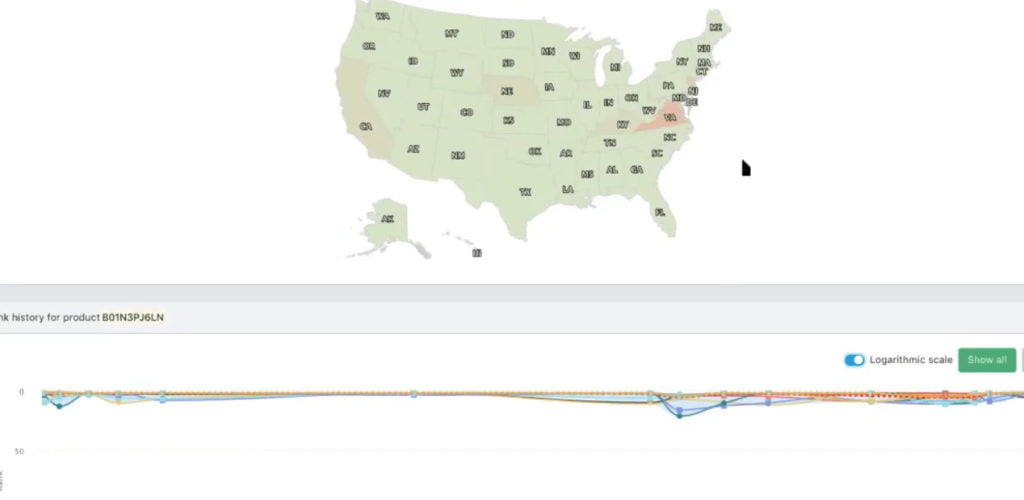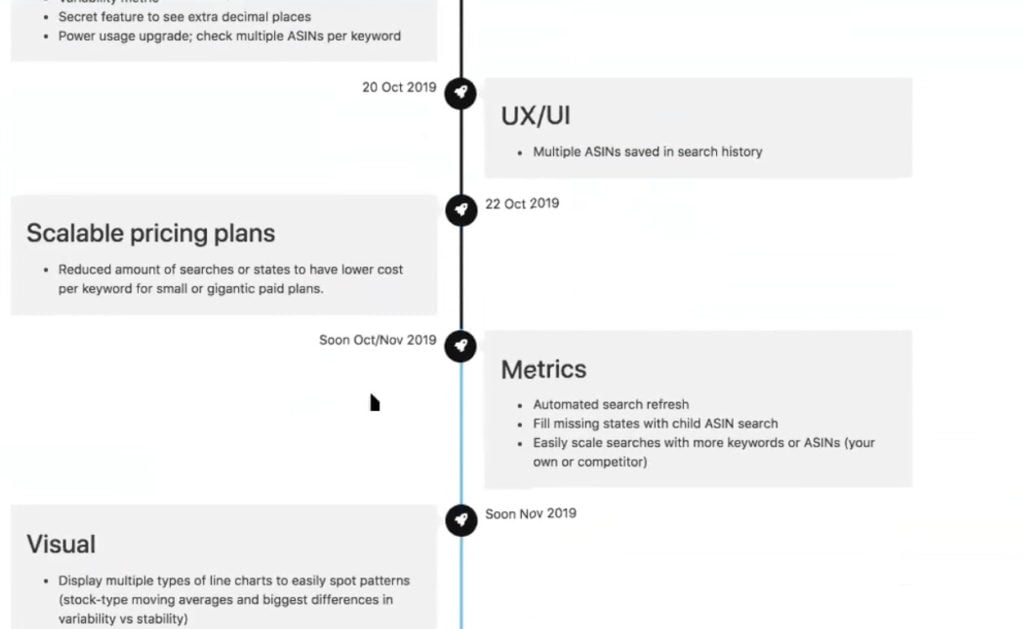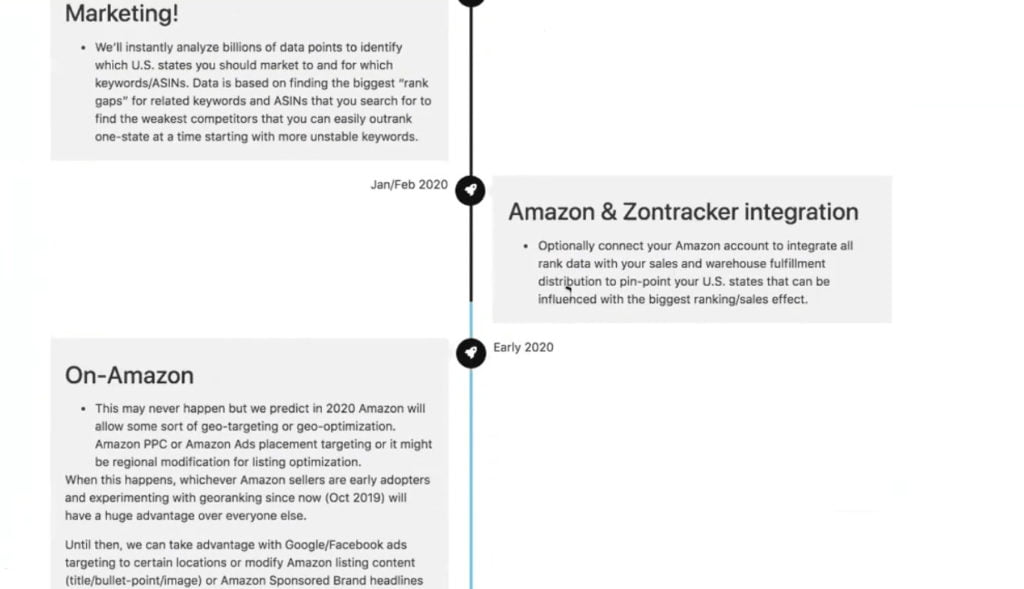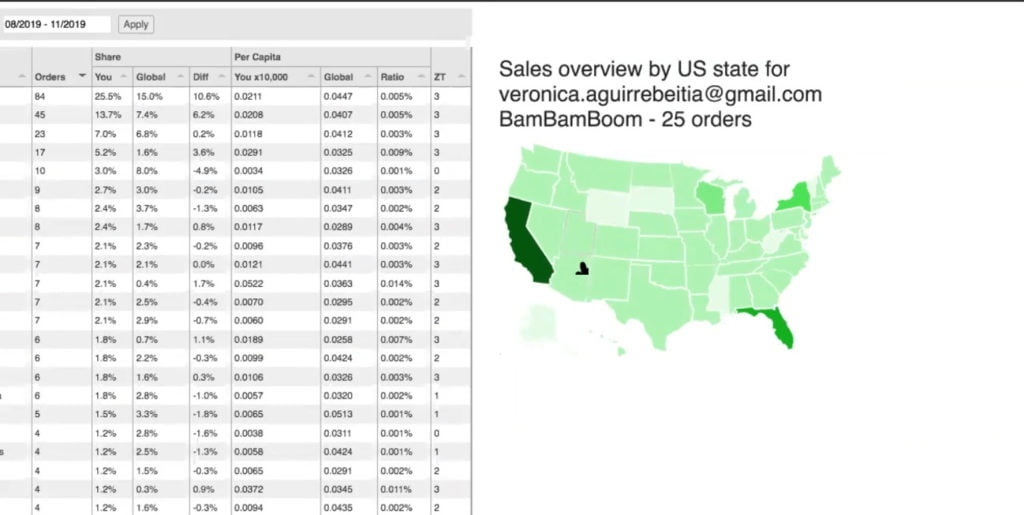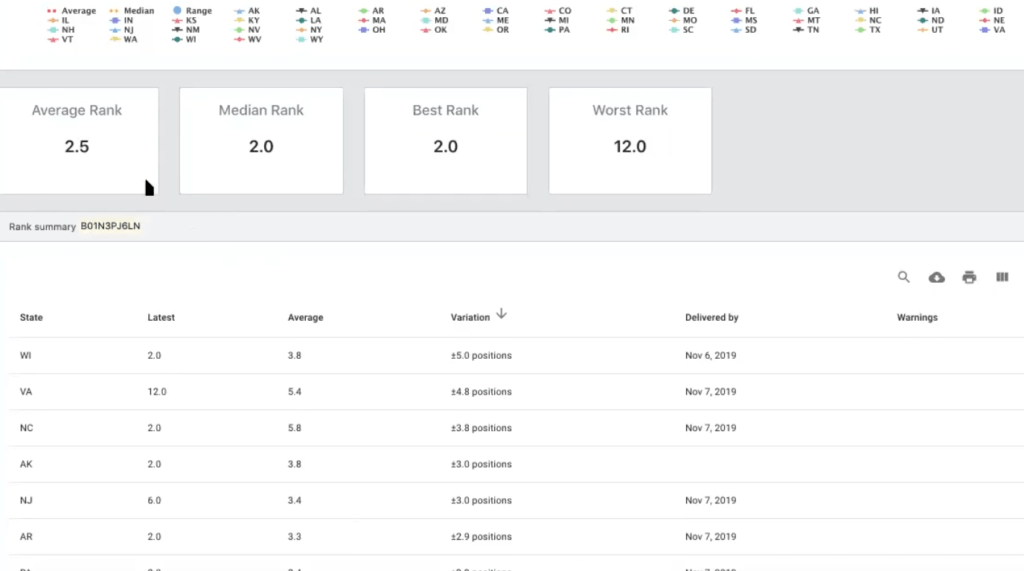AMZJet is the first-ever Amazon tool to track keyword rank at the regional level. Georank may be an important factor in the Amazon search result algorithm. Check rank for your products and for competitors in each U.S. state to leverage the data in inventory distribution and marketing strategies.
AMZJet is presented by Yev Marusenko.
List of features covered in this video:
00:37 About AMZJet
01:44 AMZJet app
03:41 Examples
04:10 Overtime
05:33 The rank
06:00 Inventory
07:17 Sort by variation
08:07 Ranked drops
09:49 Competitor
10:32 Fairly new tool
12:16 Tool for more insights
12:59 Upcoming features
18:03 Pricing
20:24 Support contacts
21:20 Special offer – coupon code DEMOMONDAYS
Transcript – Walk-through of AMZJet
[00:00] Augustas: Welcome back to Demo Mondays. Demo Mondays is video series where I invite different Amazon sellers, software creators, and I ask them to present their products just like this on the screen. And today my guest is AMZJet.
[00:20] Augustas: AMZJet is presented by Yev Marusenko. Hello, Yev.
[00:25] Yev Marusenko: Hello, great to be here. Excited to share this.
[00:29] Augustas: Cool. So yeah, please tell us what is AMZJet and how does it help Amazon sellers.
[00:37] Yev Marusenko: AMZJet it’s a newer tool where it helps track keyword rank, but it’s different than all of the other trackers, because they can do it regionally. So you can see your keyword search result position on Amazon and look how it is based on US states and then make decisions based on that. There are some unique features relevant for geo ranking.
[01:00] Augustas: So usually the next two questions are for what kind of Amazon sellers and what marketplaces is your tool, but you kind of already answered that. It is mainly only for the US market, right?
[01:14] Yev Marusenko: For now, yes. And this is very, very new, but it’s very easy to make it in other places. So if enough sellers are requesting it, then we’ll launch it in other marketplaces as well. And for the sellers, this depends on, do you use keyword tracking and if you do, beginners, intermediate, advanced sellers use it for different purposes. So if you do it, then you would use this as well. For those purposes you would just have more insight, because there’s more breakdown rather than having just one rank value for your product, you would now see it across regionally. So we’ll talk later about how beginners versus advanced sellers could use this.
[01:50] Augustas: I think there is no later. So let’s talk now. Let’s see how your software looks like, how it works like. Let’s do it.
[01:59] Yev Marusenko: So let me go directly into the app. You see the data multiple different ways. So here’s the map with the ranking of the States. If you want to look at it visually in terms of the map, or if you want to look at over time, you can track as well and look at the keyword ranked position or as a table. And then you can sort it in different ways. Some of the relevant metrics that we have. So it’s the the rank position. Now when we’re talking about how beginners are using this or advanced sellers are using this and some of the features, the really common question I get is what do you do with this data? And this is fairly new just several weeks ago, watch this. So if you’re watching this video later, then the features might be a little bit different and updated, because every few days we’re adding a new feature or a new metric, because we are getting really interesting insights how you can leverage this data.
[02:57] Yev Marusenko: Basically, once you know how your rank is in different States, you have better inside either what’s happening with your inventory or if you can actually leverage marketing to try to affect ranking. And this is where it gets really interesting and we have to think about how does the Amazon algorithm work? How does Amazon optimize their website, whether they’re doing conversion rate optimization to actually get Amazon customers to make sure that they’re showing purchases. Do they show different results, depending on which state in which region you’re coming from. So then this will give you better insight on that.
[03:43] Yev Marusenko: I’m gonna jump around different examples here. So let’s say we’re looking at a state and you put in the keyword and then you put in the acents. So just like any other keyword tracker, but then you see the breakdown. So I’m doing example where it’s placemats, we’re talking about one of these, these brands are a lot on the popular band, like bunch. You can look at competitors to where this doesn’t require an Amazon connection.
Let’s look at over time. And you would think that, if you search for the kids placemat, bees, baby placemat for girls or things like that, and then munchkin is going to come up as the number one spot, whether you’re searching it manually or you use other tools. But when you look at that a little bit further, we actually see that it’s not ranked number one everywhere.
[04:32] Yev Marusenko: So that’s the first interesting part where it’s actually weaker in some States. So let’s just break down the scale a little bit so we can see the differences. So this is ranked from number 1 over time. We’ve tracked this historically, and some States are consistently ranking lower. So whetherethis day is not always ranked number 1, as we see for the average or the medium. So pretty much all or most States are ranked number 1, but there are some that are work ranking less than that, and some consistently overtime. So I have to look for these patterns. We see that in the map to, where immediately a state isn’t there. So what do you do with this data and different ,if you’re a beginner or advanced. So let’s say if this is your own brand, where you look at this ranks and you see that a certain state has lower rank than the other States, you can do a few things.
[05:33] Yev Marusenko: Let me go into this other map. You checked the rank and you see that there’s a bunch of States that aren’t ranked, just like all of the other ones. So what you could do is, save your resources in a way where, if you’re doing external marketing, and you want to focus the ads to the States where you know you have inventory. I’m jumping into another window, where this would require an Amazon connection, but this is totally optional, where you could see the inventory across different warehouse locations. So now, you can sort it, see what’s in transfer, but what’s in the different area.
So if you know, when you’re shipping inventory to Amazon, depending on how you do it, there’s a couple of options and if it’s seller fulfilled or FBA, but you send to Amazon, and Amazon distributes it two different warehouses.
[06:26] Yev Marusenko: Depending if you send them a 100 units or 10,000 units, it’s going to go in all kinds of different warehouses. So you would know where you have a lot more units. And if there’s not a lot of units on the East coast, let’s say, then some States or regions, it’s going to take longer to receive that inventory – migh not be one day, it might be two or three days away to get that inventory. So Amazon might want to rank other brands, other products higher just because that inventory is further, and because Amazon can just put another brand to make the customer happier. So knowing the inventory, you can start relating to this data as well. Let’s look at this example, where some States that are consistently lower, whether it’s Wisconsin, Virginia or North Carolina, other ones, we can see that in the map.
[07:13] Yev Marusenko: One of the things, if you sort by variation, how flexible is it over time or, or how variable . That means there might be higher chance of losing rank for that state. So we see that’s only in a few States, where that variability is higher and it’s exactly those ones that were lower: The North Carolina, Virginia, other ones, other States. Some are high volume States are high population States as well. While some States are a lot more stable.
So here’s two things you can do. One is making sure that you’re doing external marketing, whether it’s Facebook ads or Google ads or other advertising platforms where you can actually select the region. Make sure it’s two States, where you have high inventory. Because, if you’re running ads just in automatic place, then you’re going to be wasting budget, where you’re like really far from the warehouses.
[08:07] Yev Marusenko: So you’re just going to might have ranked drops. So if you don’t want to be really careful with your budget, then only target certain States,where a 100% you know that the inventory is like right there or it’s within one day await, one day away from, from shipping. So that’s one thing. And that could be for beginners, because you actually have a smaller budget or you have way too many things to do, but you want to like save your resources, then exclude some of the States. If you’re advanced, this could actually be really interesting, where you look at all of the States, and you see some States you ranking lower. So, trying to go California from number 3 spot to number 2 spot, it’s going to be pretty hard. Or some popular States kind of just moving up 1 spot if you’re already in the top 5.
[08:55] Yev Marusenko: Let’s say you find a state you’re actually ranked number 12, where it’s more variable. That may be a low hanging fruit. So you actually try to do more marketing in that region. Amazon sees, whether it’s influx of sales from your targeting. Then Amazon based on their own algorithms, either there’s behavioral geo ranking. They’re going to try to show us they are more relevant for the type of audience in that state, because there’s different demographics and psychologists between if someone isn’t Washington state compared to Arizona, depending on climates and other reasons. Or because Amazon sees that their sales and they’re going to know to make sure that during Amazon’s transfer of inventory across warehouses, there’s going to be inventory in those regions. So it could be like a low hanging fruit to try to increase rank there.
[09:44] Yev Marusenko: If this is your brand, if you’re looking at this type of data. But let’s say you’re looking at this data and it’s another brand. It’s a competitor. So what you can do is, find the States where there’s more variability, and it’s how we looked at before, where’s there’s the most variation over time, which ones are more consistently ranking lower. So then that might be where you could leap from your competitor. Find there’s actually the smallest gaps in rank between the competitor and you, and try to advertise there. So you know, you have an advantage there. You might not catch them in California or other top selling States, but you can catch them in these other States.
[10:32] Yev Marusenko: So that’s the overall what it is. You can look at inventory, check, rank over time. And this is fairly new. There’s a lot of experimentation, I’m seeing in how you can try to take advantage of this. And then another question I get – can you do anything on Amazon to optimize this? Not just sending more inventory, because that could potentially help. So you have more inventory everywhere or I’m doing external marketing, but one of the things is that we don’t know this exactly right now, because the features aren’t there. There’s a lot of dialogue and communication. People saying that Amazon internally ways regionally,depending on whether it’s on price, or or PPC, some constantly say, that it’s definitely happening. Even hearing from Amazon or different sources, that regionaly is an important factor of how they’re showing it, but we can’t control it.
[11:24] Yev Marusenko: We can’t go into our Amazon listing and say – show this version of the listing, or this title, this regionally, or somewhere else. Whether it will happen in the future, not would be really interesting. Then this tool make even more sense for that. Some of the things you can do if using Amazon DSP, so that version of Amazon ads, you can, actually, target regions there. If you can target regions there, that’s a newer program. That already is assigned, that Amazon is really thinking about regions and as giving the options for regional targeting, so it may happen really soon – by the time some of you are watching the video or the replay of this. There may be other features, that allow you to put even more important as in to regional targeting. Those are the main features, is actually fairly simple. It’s a cured reg tracker, but now with a lot more insight we didn’t have before to try to get really strategic about regions.
[12:16] Yev Marusenko: Another question I get is, that you’re taking action on some of the things, whether it’s marketing, sending more inventory. Another part is really common – when you’re following your rank overall, sometimes you have like a drop. There’s like these fluctuations and then you started going crazy. It’s like “All rightt, what’s happening with my product, with my brand?”. So this will give you a little bit more insight, whether it’s a little bit peace of mind or just better insight, what’s happening to your brand, is it dropping in all states, only certain regions. It’s going to give you some insight, to make more comfortable knowing what’s happening, or you’ll see some of the fluctuations earlier, compared to if you see it across all of the States.
[12:59] Augustas: Very interesting unique tool. I’m happy to demo unique solutions. You mentioned, that all the time you updating with new features and I see one of the taps on your browser is a roadmap AMZJet. Can reveal us some ideas, what you’re going to implement in the near future for your toot.
[13:23] Yev Marusenko: It’s relatively early, so I’m glad you’re showing us, that it’s unique, it’s new and we’ll already based on feedback, really releasing new things that just sellers don’t see out there and other tools, but it’s providing unique insight. So even something like inventory – we just added. We had that on the roadmap for three months later, but people were saying it, so like we were able to implement it. So that’s where you have the inventory insights. Soon we’re going to be adding some of the things that we launched – we want to put important as in two different metrics. So even though there’s going to be improvements on the search experience and looking at the data, but actually giving you unique metrics and insights of how to interpret the data and how do you see the data better to find patterns.
[14:17] Yev Marusenko: As soon as you have more keywords, more agents, more competitors, than there is going to be tons of data. I’m showing you examples, where I clearly see differences, but you can easily go into other products, where is aleady so much data. What are the main patterns, that are coming out from that? So we want to show different metrics, such as patterns and variability or moving averages. And one of the things, we have marketing recomendation. So this is going to be really cool one, and fairly easy to do, but it’ll just take a lot of data powers, that if you’re put in a certain ASIN, and a certain keyword, and then you’re looking at your brand or a competitor’s brand, you’re looking at the data.
[15:08] Yev Marusenko: One of the things we’re going to do is, automatically search for everything related to that. As soon as you put in kids’ placemat, there’s relevant keywords to that, whether it’s baby placemats, or kids placemats for boys. There’s a lot of long tail versions of this. And then there’s a lot of related acents. So what are we’re going to do is, automatically analyze other keywords, not just the one that you’re intentionally searching for. And then we’re going to look at not just your data, but competitors data of all kinds of ASIN, and find patterns, where there’s basically opportunities for you to rank higher. What I mean by that is, manually we are looking at this and we see that there’s all of these States opportunities, where there’s more variability. So, either you have more chance of losing rank, or you have more chance of catching up a competitor.
[15:57] Yev Marusenko: This is their data. So we’re going to look at a lot of data at the same time and then tell you, where actually look at this other keyword, and this ASIN, and your competitor, where you have a higher chance of ranking. There is opposed to the one, that maybe you thought that you want to be ranking for. It’s just to give you ideas. That’s different metrics, related ones, that are going to be really interesting, and I think helpful to contents, and summarize a lot of the data that is being shown. Another one is – integrating this with other types of data, and we already done the inventory part. It’s really useful. So this is also a dashboard – brand that we’re working with and showing case study, but you can see regional sales.
[16:49] Yev Marusenko: So this is a sales data. It’s also regional. But one of the things is, if you start correlating the rank data with inventory data, sales data and other metrics, you can start getting an idea, when you’re taking action, does it actually make a difference or not? Meaning you send in more inventory. Does that actually give you more sales just by sending more inventory. Mark for a certain state. Also, if you compare certain States knowing, what is the affinity of customers from purchasing, from you compare to other brands. So this is a metric that we have. We want to integrate this into AMJet – how do sales in one state, compared to other Amazon sellers. So this is some of the data we have from our other software. Basically looking at something if it’s like a positive, like a really positive difference sales, that you’re getting than you want to advertise even more than it, because the customers in that regions, whether psychologically, or culturally, or socially in that region, your product or brand more unique features that solves the problem. So we want to integrate those types of features in there. So that’s on the roadmap as well.
[18:03] Augustas: Great. So let’s talk about the pricing – how do you price? I Have no idea. Maybe per product, per ASIN, or per searches.
[18:13] Yev Marusenko: It’s per search. So basically that’s what we’re paying for internally. It’s a bit expensive, maybe why other software haven’t, done this, or haven’t thought of actually showing us that, or didn’t see that many differences before. It’s basically for search. There is a free plan and it’s free forever. It’s just very limited use usage. You get the full features and you’re able to see, how it works and look at your data. But you can just do a couple of searches per month. So that’s what it is. And then there’s also a trial version on any of the plants. But the plant scale with amount of ASIN that you’re putting in there. So basically, and amount of keywords that you’re searching. So the more searches you do, then the plan changes based on that. Because pricing itself may change, we’re looking at how sellers are using it. It’s with the amount of usage. There’s a couple of upgraded features you can do other than just this main part, where you see the rank by state. One of the things is, that you can look at some of the decimal places in the data. When you’re looking at the rank where it’s not just like a rank of 1 or a rank of 2, you could see even further, whether it’s 2.5 or 2.0. Some brand’s actually important, because if you’re ranked number 4 versus number 5, it’s important to know like if you’re trying to catch that number 4 spot – are you ranked 5.9 or or 5.1. So it’s like, how much more effort do you need to put to catch that 4.1. Because it’s averaging all of this data across different States, you know that rank position even better. Another part of the upgrade is, you can just searching for more ASIN’s per every keyword, because it’s actually more data for every single ASIN, that you’re putting in , and every different keyword. Those are some of the upgrades in there, but the pricing is based on amount of keywords that you’re searching.
[20:24] Augustas: All right, cool. If someone has questions, presale or during the subscription, what’s the best way to contact support?
[20:36] Yev Marusenko: The best way is at support@amzjet.com. We want to make this one, where it’s as little support, as required, because it’s a rank tracker, so it should be very basic. And right now, we’re trying to upgraded it, where it’s very self explanatory and there’s like no set up. You just go in and use it. Also there’s support in our Facebook group, if you search for AMZJet. The Facebook group will come up in there, so you can see case studies and how people are using it in there too.
[21:20] Augustas: Perfect. And final question, do you have any offer for Demo Mondays viewers?
[21:26] Yev Marusenko: Yeah, we do. If you put DEMOMONDAYS as the coupon code on the offer, you’ll get a special deal. So that’s gonna be 15% off subscription to AMZJet.
[21:43] Augustas: Yeah. Okay, cool. And DEMOMONDAYS – all capitalized is the key.
[21:48] Yev Marusenko: Any version, any capitalization, one word – DEMOMONDAYS.
[21:52] Augustas: Perfect. Thank you very much and good luck in your business. Bye, bye.
[21:57] Yev Marusenko: Thank you very much. Bye.

